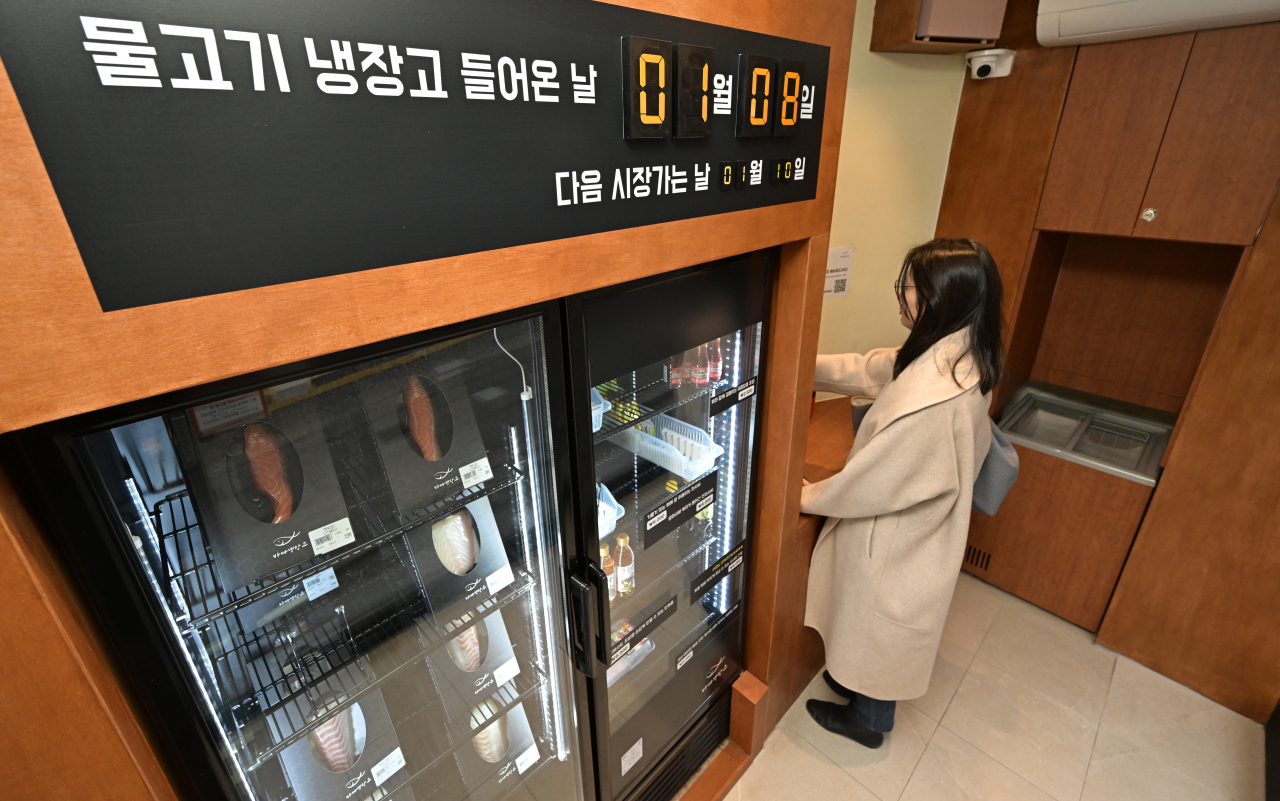 |
Unstaffed sashimi store Sea Fridge, located in Sangwangsimni, Seoul (Im Se-jun/The Korea Herald) |
Choi Seung-hoon, 32, a regular patron of self-service venues in Korea, recently broadened his experiences in unstaffed shops by purchasing a takeaway sashimi dinner set for one.
“I usually eat alone,” he told The Korea Herald at Sea Fridge, an unmanned sashimi store near Sangwangsimni Station, central Seoul, as he looked through the glass refrigerator door at a selection of vacuum-packed, aged fish, mostly in packages with one or two servings.
“I think this is good because I can buy sashimi without going to seafood markets or raw fish restaurants.” Choi's choice was a 150-gram serving of yellowtail sashimi, priced at 15,000 won ($11).
Unstaffed retail is well-established in South Korea, with many neighborhood convenience stores now operating without any staff during the nighttime. But recently, there has been a noticeable expansion and diversification, with young entrepreneurs bringing the concept into traditional sectors such as fish markets, butchers, clothing stores and pet shops.
There is no comprehensive data on the number of unstaffed retail spaces nationwide, but a recent survey by the National Fire Agency from 2022 to 2023 showed there were at least 6,300 such establishments.
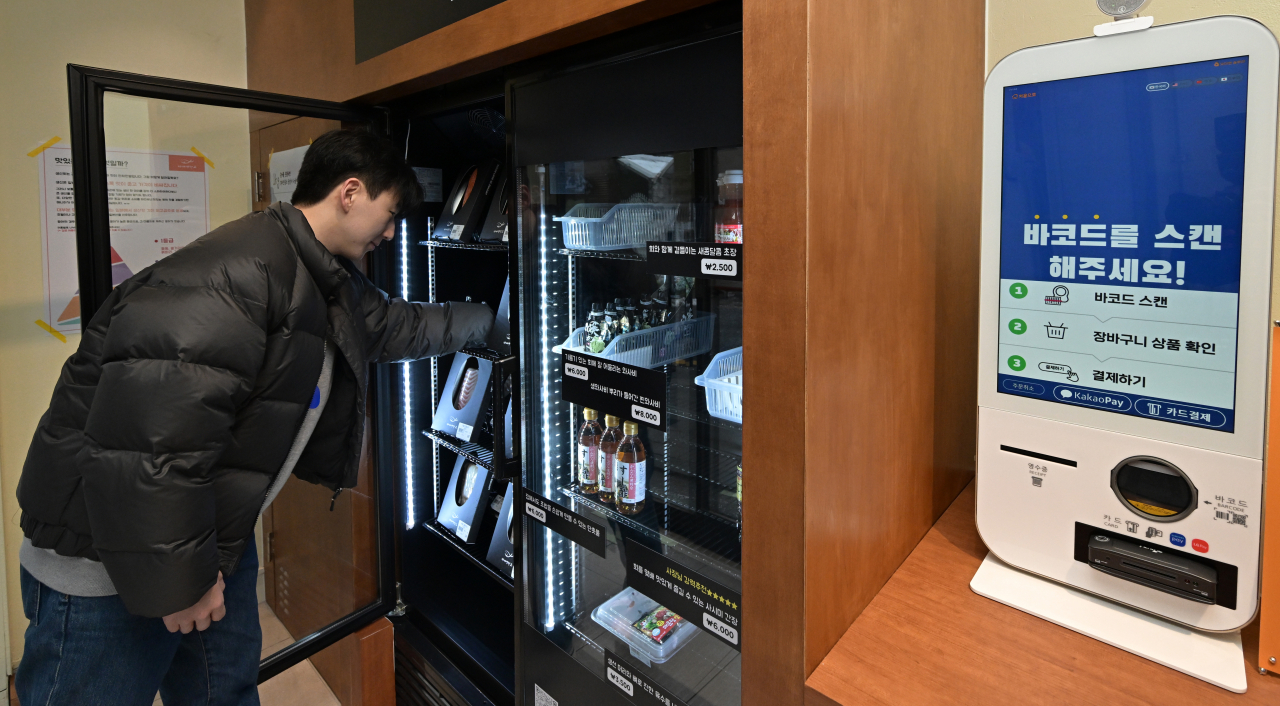 |
CEO of Sea Fridge Kang Dong-yoon organizes products at his unstaffed sashimi store in Sangwangsimni, Seoul. (Im Se-jun/The Korea Herald) |
Appeal of unstaffed stores
The owner of the sashimi store by Sangwangsimni Station, Kang Dong-yoon, 34, runs a total of three shops under the Sea Fridge brand.
To compete with traditional sashimi restaurants which often display live fish in water tanks here, unstaffed stores must ensure the freshness of their food, he explained.
To do this, Kang procures fish three times a week through auctions at Noryangjin Fish Market, the largest seafood market in Seoul. He films the process and shares it on the shop’s Instagram.
Managing his three sashimi outlets takes him about 10 hours per week. "This includes everything from fish procurement to slicing, packaging, shop display and maintenance," he explained.
Kang, who has 10 years of experience in running a franchise business, now plans to open another unstaffed shop, a butcher shop, also by himself.
A clothing shop owner, Lee So-in, 34, said the primary benefit of self-service retail is the flexibility it affords merchants in managing their time.
Her shop, My Sassy Fairy, in Gimpo, Gyeonggi Province, opened as a conventional store with a human clerk -- herself -- in early 2023. In the summer, it became an unstaffed store, because Lee needed to care for her baby. Now, Lee only works at the shop once a week to restock clothes and accessories.
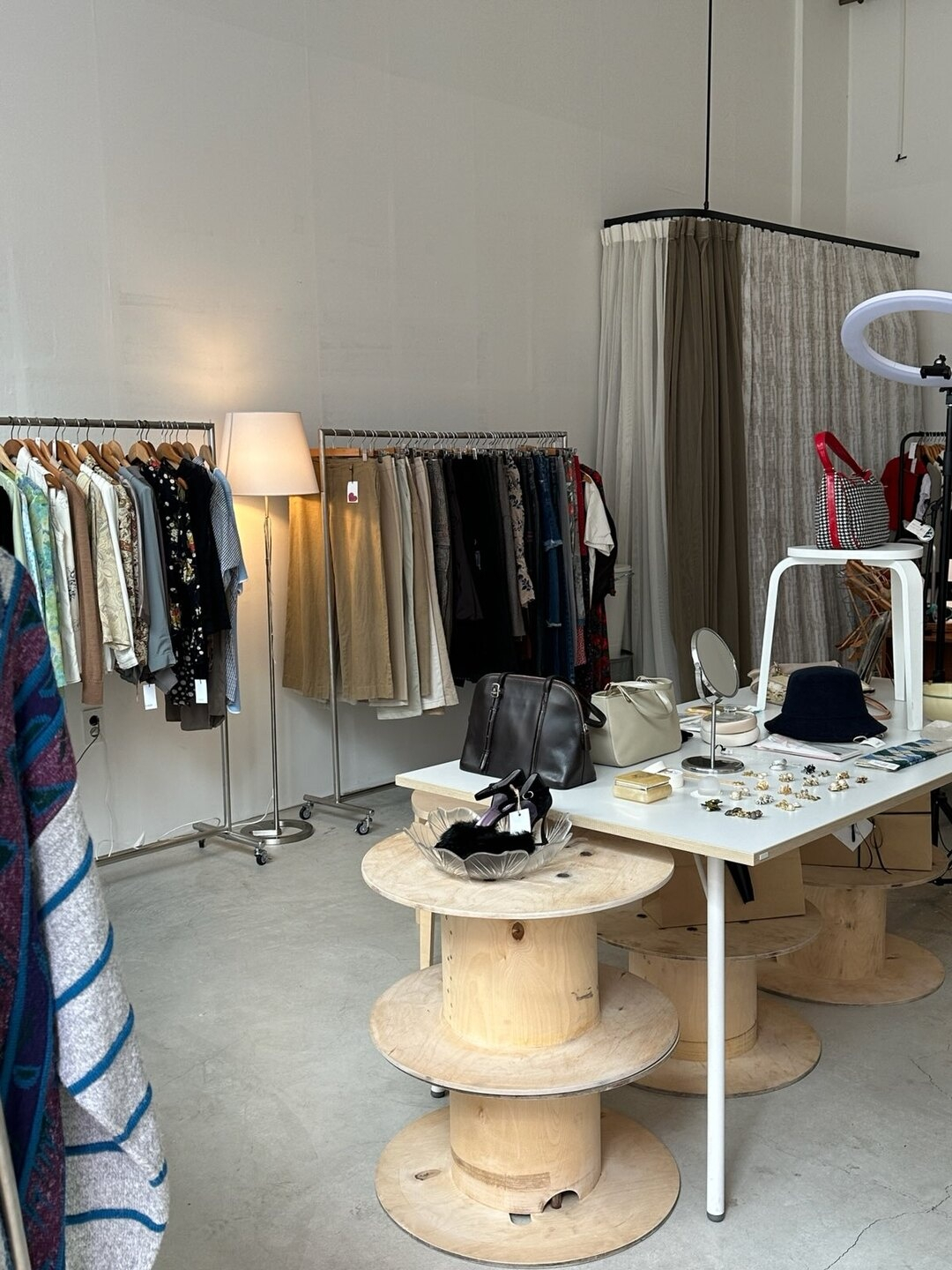 |
Unstaffed clothing shop My Sassy Fairy in Gimpo, Gyeonggi Province |
The switch, however, didn’t have a meaningful impact on sales, which stayed more or less the same.
"I lost some regular customers who enjoyed chatting with me, but at the same time, I gained new customers," she said. "It seems that in the absence of shop staff, customers feel more comfortable trying on different clothes."
According to a survey by research firm Embrain, which polled 1,000 people, 71.9 percent of the respondents said they had visited unstaffed stores. Of them, about 80 percent expressed their willingness to visit them again. The primary reason for their positive response was the elimination of the need to interact with service personnel.
Go Ye-eun, 37, who was shopping at the unstaffed store Fredit in Yongsan, Seoul, resonated with the survey’s findings.
She appreciated not having to deal with “nunchi” -- having to read subtle signs of judgment from shop staff -- particularly when making minor purchases, like a pack of chewing gum, costing less than $1, with her credit card, or when leaving the store without purchasing anything.
"Besides, the products (at unstaffed stores) are more diverse and less expensive," she said.
 |
An unstaffed clothing shop |
Human touch still necessary
Shop owners said that, while they don’t meet customers face-to-face, it is still important for them to stay attuned to customers' needs and engage with them through other channels.
Park Seung-min, 34, who operates the unstaffed pet supply store Sugar Pet in Seoul, continuously studies the latest trends in the pet industry to keep his store's offerings up to date.
Since 99 percent of his customers are women in their 20s and 30s, Park tries to provide a pleasant shopping experience for this particular demographic.
Decorated in pink and white, his shop features a special section dedicated to shoppers and their furry friends. One wall is adorned with messages on post-it notes from shoppers while a screen displays photos of their pet dogs.
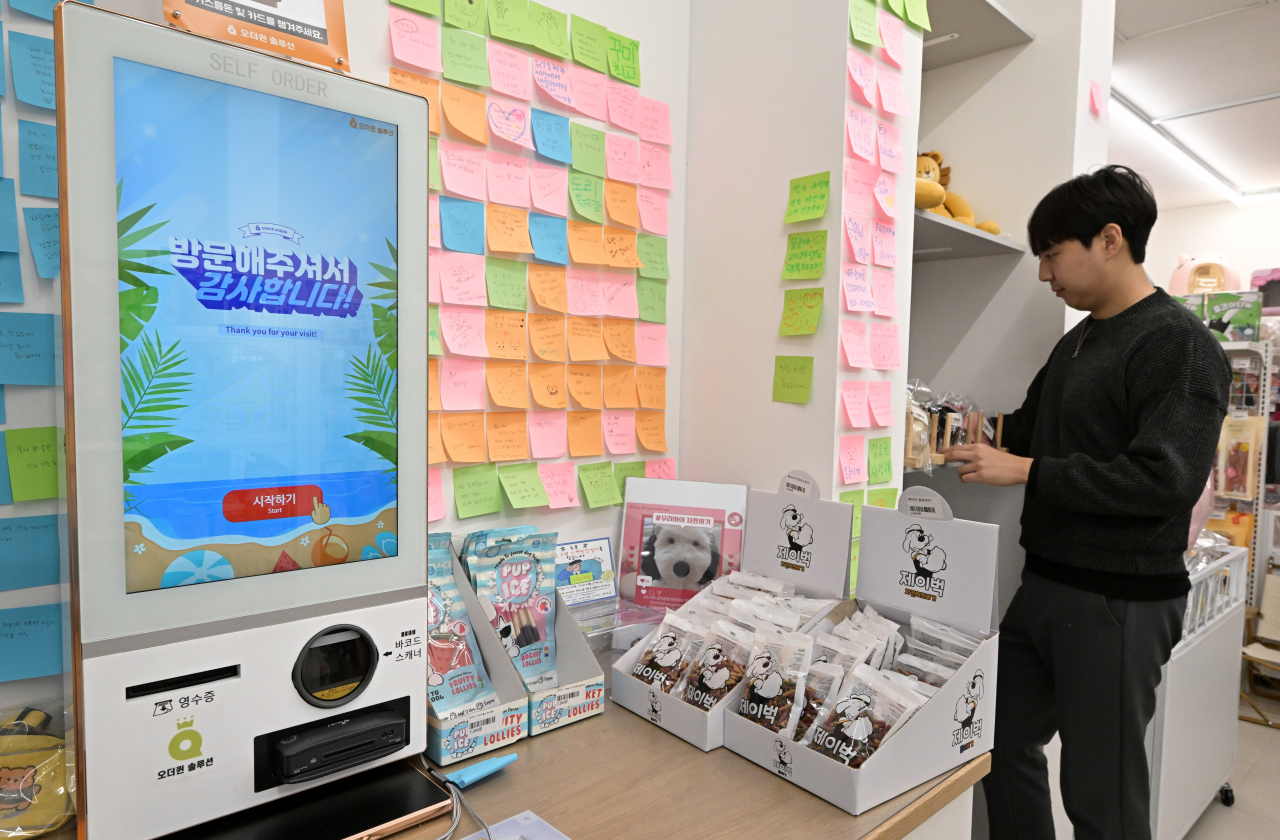 |
One wall of unstaffed pet supply store Sugar Pet in Mapo-gu, Seoul, is adorned with Post-it notes, each bearing a message from a customer. (Im Se-jun/The Korea Herald) |
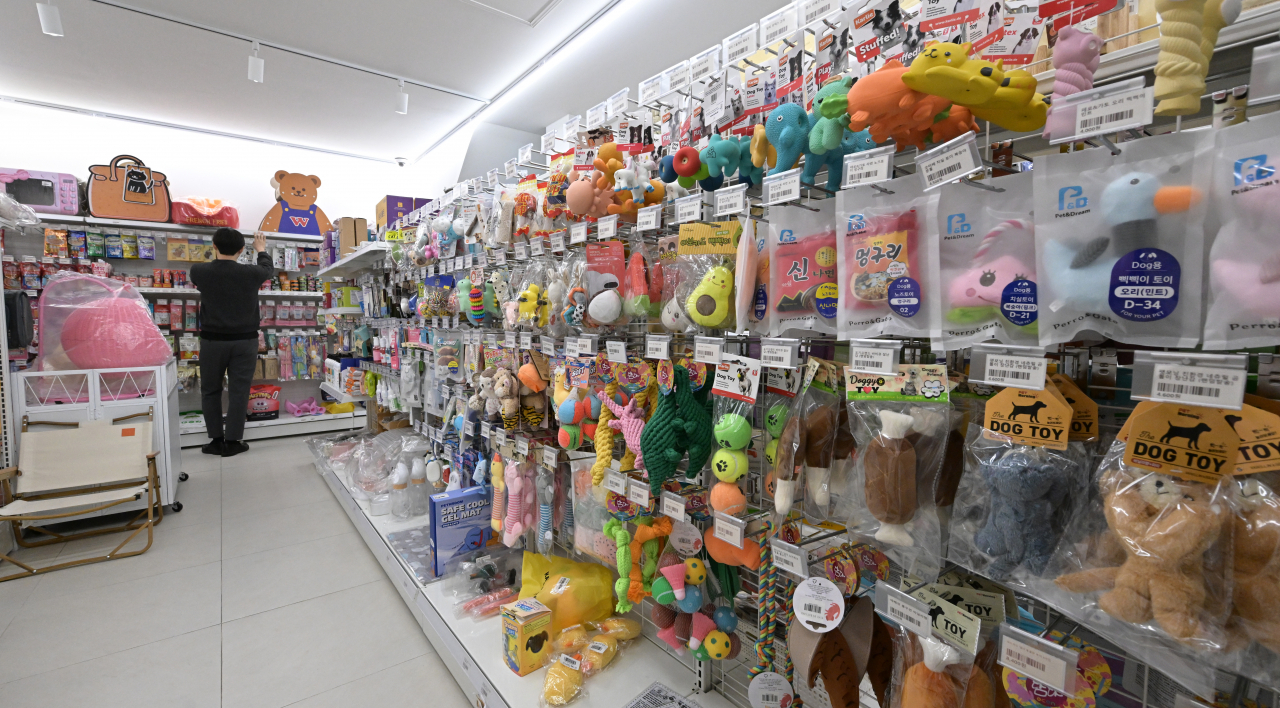 |
CEO Park Seung-min organizes products at his unstaffed pet supply store, Sugar Pet, in Mapo-gu, Seoul. (Im Se-jun/The Korea Herald) |
"I also try to post many messages on Instagram about new products to compensate for the lack of personal interaction," he said.
Clothing shop owner Lee So-in said that even in unstaffed stores, there is no such thing as a fully self-service system.
"Regular maintenance is crucial," Lee said. "Without it, the lack of human oversight becomes apparent very quickly."
Lee So-in visits her store daily to tidy up. While most customers are considerate and try to keep things orderly, there are instances of carelessness, like hangers lying on the floor or clothes hanging haphazardly. Without someone minding the store, items can be mishandled, leading to potential damage such as tears in delicate materials or makeup stains on clothing.
Although not very often, there are times when human assistance is required.
Go Ye-eun once experienced a kiosk error: A product tagged at 2,000 won was charged as 3,000 won at the kiosk. Similarly, Sang-woo, a 27-year-old who frequents unstaffed cafes and convenience stores near his university, recounted an incident at an unstaffed coffee shop where a machine error resulted in a 20-minute wait for a refund.
Dealing with theft
The primary challenge facing owners of unstaffed shops is theft.
Shops that operate by allowing entry only through credit card verification at the door experience minimal incidents. However, stores like ice cream shops or convenience stores, whose customers are often too young to own a card, tend to not have the requirement and face a higher rate of theft.
According to police data, there were 6,018 reported cases of theft in unstaffed shops in 2022, a 71.25 percent increase from the previous year. The uptick in crime is particularly notable among teenagers. Data analysis by the security management firm S-1 Corporation, covering the period between 2020 and 2022, revealed that teenagers accounted for the largest proportion of theft cases at 34.8 percent. The methods of theft varied, ranging from customers concealing products and leaving the store undetected to shop visitors deliberately omitting payment for items.
Many unstaffed shop owners resort to posting images captured from security footage of theft incidents on their store walls, accompanied by warning signs. However, some are reluctant to adopt this approach, mindful of the potentially negative effect these messages might have on the atmosphere in their store.
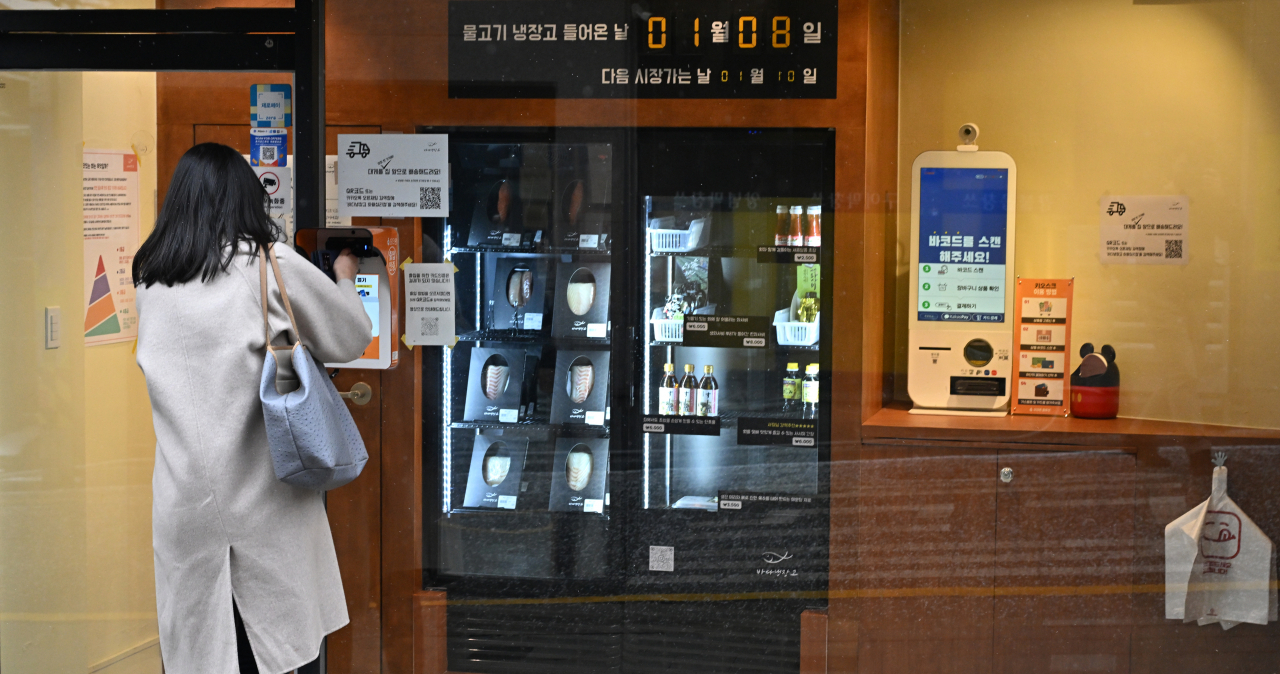 |
A customer enters the unstaffed sashimi store, Sea Fridge, in Sangwangsimni, Seoul, through credit card authentication. (Im Se-jun/The Korea Herald) |
Lee recounted one incident of theft in her clothes shop.
While checking the store surveillance cameras, she spotted someone taking clothes without paying. The same individual returned five days later and stole clothes again, seemingly emboldened by the lack of consequences following the first incident.
Lee posted a message on the store’s Instagram that she has filed a police complaint about the theft, hoping it would serve as a warning sign.
"I didn't want to spoil the shop's atmosphere,” Lee said.







